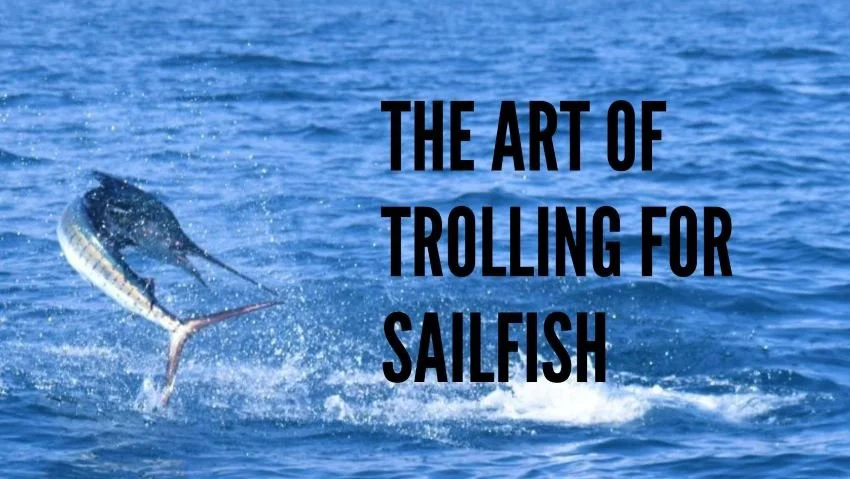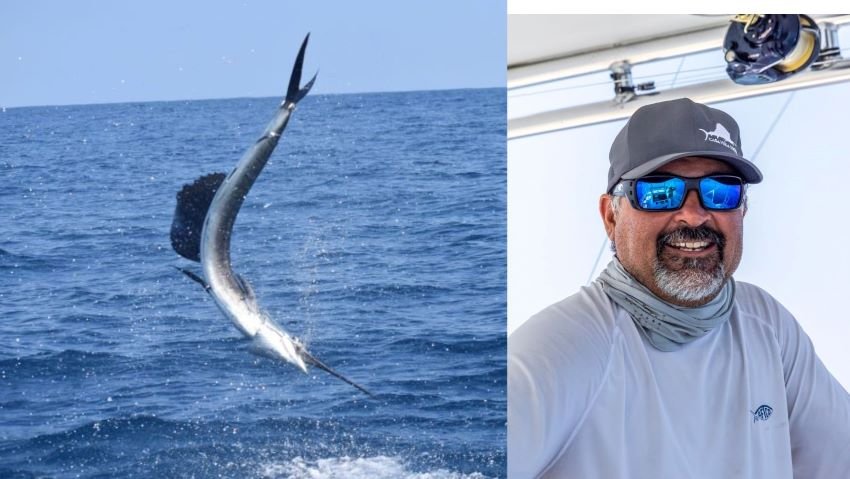You’ve Found the Sailfish – Now What? Expert Guatemala Billfishing Tips from Captain David Salazar
All of the captains in the Casa Vieja Lodge sailfish fleet off the Pacific coast of Guatemala understand how to work collaboratively to find the region’s billfish, especially the plentiful sailfish. There are few if any secrets on this well-established and world-class fishery. Nevertheless, even when fishing side-by-side certain captains and certain boats tend to produce more raises, bites and releases than some others while chasing Pacific sailfish. It can’t be dumb luck. As with everything in fishing, getting the sailfish to commit is part art and part science, and few have ever been better at it than Captain David Salazar.
He previously explained us how he locates the “needle in the haystack.” In this interview, he shared his proven strategies for turning those sightings into hookups—and putting sailfish in the boat.
Trolling Speed for Sailfish
HPFC: Do you always troll at the same speed?
Salazar: No. Generally if it’s calmer you go faster and if it’s rougher you go slower. When I’m going for sailfish I’m usually going about six and a half knots.
Triggering Bites from Hesitant Sailfish
HPFC: When fish come up into your spread, but they’re hesitant to bite, what change or changes do you make? Do you alter your speed? Do your change your teasers? Or is there some other way to get them to commit?
Salazar: On the teaser bites it depends which boat you’re on. For me, if a fish comes up to the teaser and he won’t eat the bait, sometimes I’ll sink the bait to make it swim and that’ll generally trigger the bite.
HPFC: What about the teasers themselves? Our mate told us today that “They don’t see color.” Clearly, though, sometimes they key in on certain ones at certain times.
Salazar: I’m not too sure about the color part but I know that sometimes you can put a chartreuse one out there and they’ll tear it up and you’ll put a black and orange one out there and they won’t touch it. I think they see something different about it.
Adjusting Techniques for Rough vs. Calm Water
HPFC: So what other changes do you make if it’s rough versus when it’s calm?
Salazar: You have to go as fast as you can go without the baits flying out of the water, so that means if it’s rough you have to go slower. That’s what I’ve always done.
Maximizing Bites While Fishing Crowded Areas
HPFC: Even when you’re fishing in the same areas, with the same tools, certain boats seem to catch more fish. What do you do as a captain to make sure you get more bites?
Salazar: Turn the boat fast – it’s whoever turns the boat the quickest gets back on the bait and the bite.
HPFC: What about when you have one or two or more sailfish come up and you drop it back to them and they won’t eat it? You know they’re there, but they’re not super-aggressive. What’s the process of turning back around?
Salazar: You try to get back over them, and while you’re getting bit you’re trying to get more bites. The main reason for the turn is obviously to go forward on them with the bow of the boat which is quicker, but you’re also still dragging your baits trying to get more bites. You hook ‘em on one side and try to turn to get the baits back where the fish is, because all of the other fish are under them. That’s how you get more bites.
HPFC: What’s the strategy for backing down on the fish? I’ve fished with you, I’ve fished with Captain Nicho, and it’s incredible how you go to one fish first and then you get another one. There seems to be a real skill to keeping the boat in the right position so you don’t screw up two bites.
Salazar: You always go to the one that’s closer. On the multiples, the one that’s closer is the one you catch first. If you get a triple on, you go for the closer one first. My ideology on that is when in doubt, go forward. If everything is behind the boat and going nuts, then pull away from it, let it all settle down and then back up on them one by one.
HPFC: We have a lot of people tell us that they’d be bored trolling, but when it’s all happening, it’s incredible to watch. It’s like the mates are doing ballet out there.
Salazar: It’s like a fire drill.
Training Your Eyes for Sailfish Detection
HPFC: Today Daniel was making lunch inside the boat and all of a sudden he came flying out. He saw a fish that none of the rest of us saw. How do you train your eyes to see that so quickly? I see some of them, but I don’t see all of them.
Salazar: You get used to it. It’s like anything else – the more you do it, the better you get at it. You get used to it. I try to explain to people that your bait sets out a certain wake. Besides the fact that you can see a big old sailfish coming up behind it – it looks like a trash bag – but if you’re in low light or you have the sun in your eyes, I generally look for that wake. All of a sudden out of nowhere, that wake goes from a little “V” to a big “V.” That’s how you know something’s pushing water behind it. You’ll see that wake change. It’s just like topwater fishing for bass.
Standard Teaser and Bait Setup
HPFC: What about the length of the teasers and the baits? Do you vary that at all depending on the conditions or the way that the fish are eating?
Salazar: It all stays the same. We don’t really change it. My teasers, like my bridge teasers, they’re always on the second wave. The long teaser is always on the fourth or fifth wave. That’s pretty standard.
Experience the Sweet Science of Sailfish Fishing
Every time we fish with the captains at Casa Vieja Lodge, we learn a little bit more about the art of billfishing. Unfortunately, we lost Captain Salazar after this explanation of the sweet science, but his legacy and his lessons live on. If you really want to get more insight into it, however, you need to see it for yourself. Email Hanna and she’ll get you the details on a trip to Guatemala to get in on the action.







